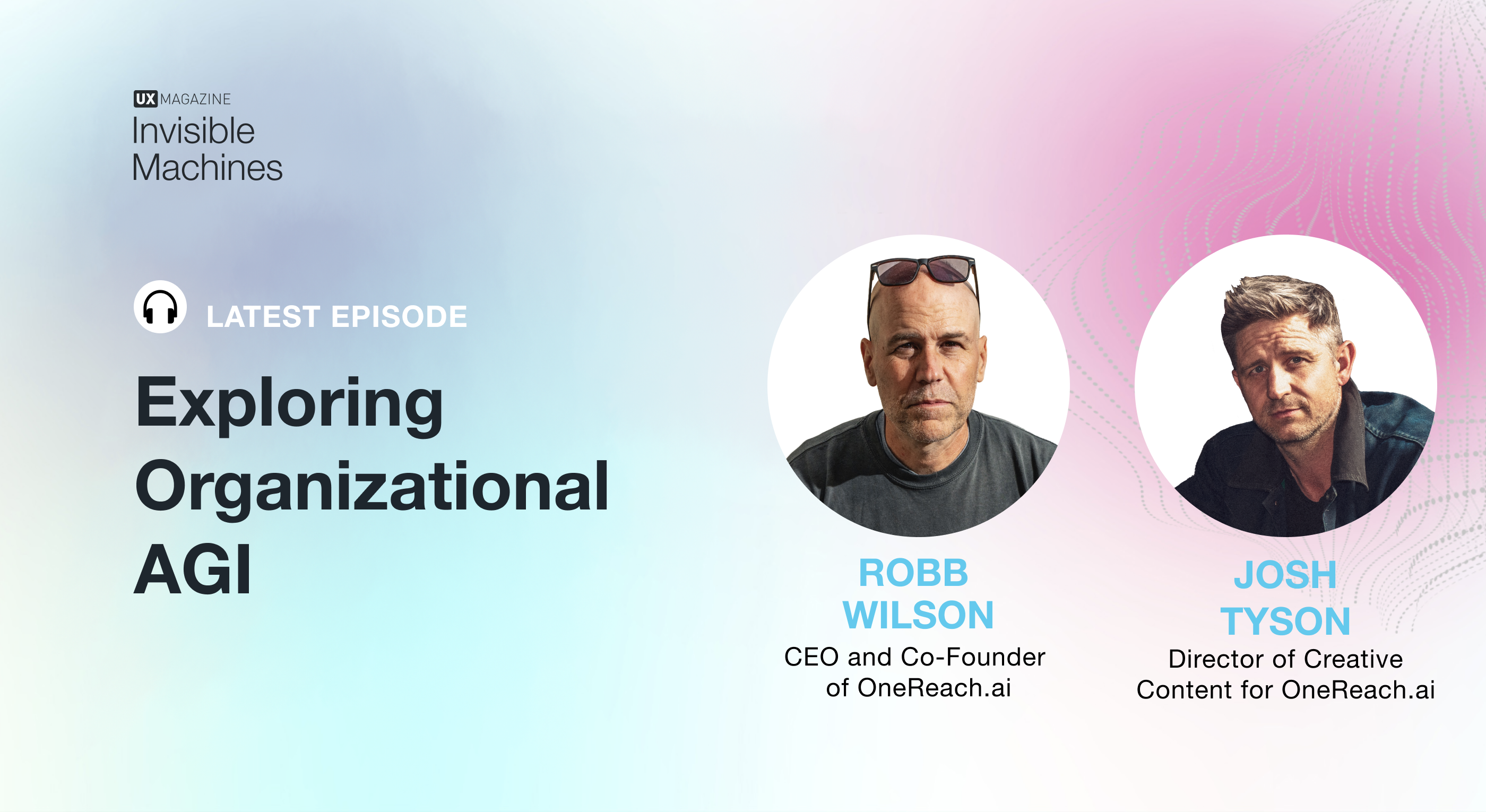How do AI agents fit into a strategy for increasing a business’s longevity? Imagine having a conversational operating system for your organization that is always learning. The advanced orchestration of AI agents can create a broader technology ecosystem, setting a trajectory for organizational artificial general intelligence (OAGI).
In broad terms, artificial general intelligence, or AGI, refers to a system of artificial intelligence that meets or surpasses human capabilities across a wide range of cognitive tasks. General intelligence is what has enabled humans to adapt to a diverse array of environments on Earth. Replicating this versatile and complex intelligence is a daunting challenge. However, the level of general intelligence required to run portions of a business is much narrower and far more feasible.
In a recent episode of Invisible Machines, Robb Wilson, CEO and co-founder of OneReach.ai, who coined the term ‘OAGI’, is joined by co-host Josh Tyson and Executive Producer Elias Parker for a forward-looking exploration of this important adaptation to the concept of OAGI.
With the lifespan of companies across industries in sharp decline, organizational AGI offers a promising opportunity to boost their agility and help companies adapt to survive and thrive.
Don’t miss this expansive look at the future of business.
Subscribe to make sure you don’t miss our upcoming continuation of this conversation, wherein we’re joined by a senior partner at McKinsey to discuss the longevity, health, and agility of companies and organizational AGI.








